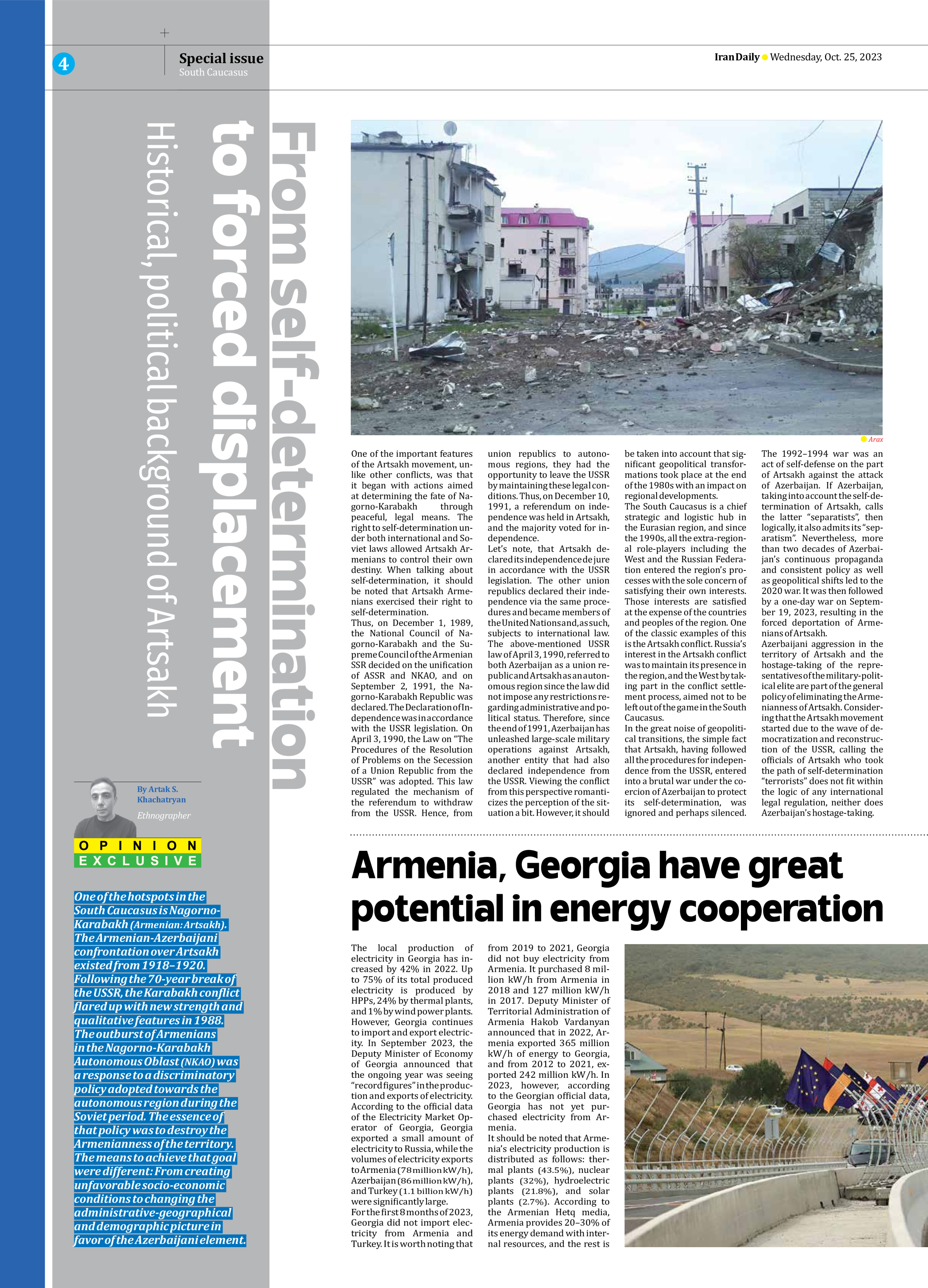
From self-determination to forced displacement
Historical, political background of Artsakh
By Artak S. Khachatryan
Ethnographer
One of the hotspots in the South Caucasus is Nagorno-Karabakh (Armenian: Artsakh). The Armenian-Azerbaijani confrontation over Artsakh existed from 1918–1920. Following the 70-year break of the USSR, the Karabakh conflict flared up with new strength and qualitative features in 1988.
The outburst of Armenians in the Nagorno-Karabakh Autonomous Oblast (NKAO) was a response to a discriminatory policy adopted towards the autonomous region during the Soviet period. The essence of that policy was to destroy the Armenianness of the territory. The means to achieve that goal were different: From creating unfavorable socio-economic conditions to changing the administrative-geographical and demographic picture in favor of the Azerbaijani element.
One of the important features of the Artsakh movement, unlike other conflicts, was that it began with actions aimed at determining the fate of Nagorno-Karabakh through peaceful, legal means. The right to self-determination under both international and Soviet laws allowed Artsakh Armenians to control their own destiny. When talking about self-determination, it should be noted that Artsakh Armenians exercised their right to self-determination.
Thus, on December 1, 1989, the National Council of Nagorno-Karabakh and the Supreme Council of the Armenian SSR decided on the unification of ASSR and NKAO, and on September 2, 1991, the Nagorno-Karabakh Republic was declared. The Declaration of Independence was in accordance with the USSR legislation. On April 3, 1990, the Law on “The Procedures of the Resolution of Problems on the Secession of a Union Republic from the USSR” was adopted. This law regulated the mechanism of the referendum to withdraw from the USSR. Hence, from union republics to autonomous regions, they had the opportunity to leave the USSR by maintaining these legal conditions. Thus, on December 10, 1991, a referendum on independence was held in Artsakh, and the majority voted for independence.
Let’s note, that Artsakh declared its independence de jure in accordance with the USSR legislation. The other union republics declared their independence via the same procedures and became members of the United Nations and, as such, subjects to international law. The above-mentioned USSR law of April 3, 1990, referred to both Azerbaijan as a union republic and Artsakh as an autonomous region since the law did not impose any restrictions regarding administrative and political status. Therefore, since the end of 1991, Azerbaijan has unleashed large-scale military operations against Artsakh, another entity that had also declared independence from the USSR. Viewing the conflict from this perspective romanticizes the perception of the situation a bit. However, it should be taken into account that significant geopolitical transformations took place at the end of the 1980s with an impact on regional developments.
The South Caucasus is a chief strategic and logistic hub in the Eurasian region, and since the 1990s, all the extra-regional role-players including the West and the Russian Federation entered the region’s processes with the sole concern of satisfying their own interests. Those interests are satisfied at the expense of the countries and peoples of the region. One of the classic examples of this is the Artsakh conflict. Russia’s interest in the Artsakh conflict was to maintain its presence in the region, and the West by taking part in the conflict settlement process, aimed not to be left out of the game in the South Caucasus.
In the great noise of geopolitical transitions, the simple fact that Artsakh, having followed all the procedures for independence from the USSR, entered into a brutal war under the coercion of Azerbaijan to protect its self-determination, was ignored and perhaps silenced. The 1992–1994 war was an act of self-defense on the part of Artsakh against the attack of Azerbaijan. If Azerbaijan, taking into account the self-determination of Artsakh, calls the latter “separatists”, then logically, it also admits its “separatism”. Nevertheless, more than two decades of Azerbaijan’s continuous propaganda and consistent policy as well as geopolitical shifts led to the 2020 war. It was then followed by a one-day war on September 19, 2023, resulting in the forced deportation of Armenians of Artsakh.
Azerbaijani aggression in the territory of Artsakh and the hostage-taking of the representatives of the military-political elite are part of the general policy of eliminating the Armenianness of Artsakh. Considering that the Artsakh movement started due to the wave of democratization and reconstruction of the USSR, calling the officials of Artsakh who took the path of self-determination “terrorists” does not fit within the logic of any international legal regulation, neither does Azerbaijan’s hostage-taking.







